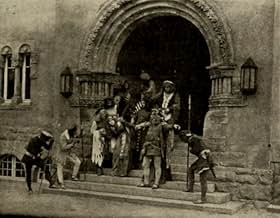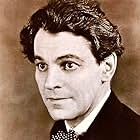A young novice leaves the convent for a knight. Unlike the better-known 1959 film "The Miracle", this version is set in medieval times.A young novice leaves the convent for a knight. Unlike the better-known 1959 film "The Miracle", this version is set in medieval times.A young novice leaves the convent for a knight. Unlike the better-known 1959 film "The Miracle", this version is set in medieval times.
Florence Winston
- Megildis, the Nun
- (as Florence W. Feljigg)
- Directors
- Writers
- All cast & crew
- Production, box office & more at IMDbPro
Storyline
Did you know
- TriviaDebut of the actor Ernst Lubitsch who later would become one of the greatest director both in silent and sound movies..
- ConnectionsReferenced in The Petrified Forest (1936)
Featured review
A handful of films in early cinema was projected around lavish stage sets, live actors and and a full orchestra playing original scores. One of the first of these was L. Frank Baum's 1908 "The Fairylogue and Radio-Plays," a mixture of live actors, hand-tinted slides as well as the movie. 1912's "With The King And Queen Through India" was also an extravaganza, complete with live music, stage settings and lighting special effects.
So successful was the later that producer Joseph Menchen undertook to adapt Karl Vollmoller's 1911 wordless play of "The Miracle" into a film version. Set in the Middle Ages of the Virgin Mary taking the place of a wayward nun and experiencing several adventures in the human world, Menchen's multi-media premier presentation of "The Miracle" on December 21, 1912 at the Royal Opera House, Covent Gardens, London, was greeted with a standing ovation.
Menchen spared no expense in showcasing his film to limited engagements around the United Kingdom and the United States. Surrounding the projection of the movie was a 75-strong orchestra playing German composure Engelbert Humperdinck's original score (English pop singer Arnold Dorsey adopted the composer's name in the 1960's). Accompanying the orchestra were 60 chorus singers, changing stage sets and hundreds of actors mimicking on stage what was being projected in the film. Those who had seen "The Rocky Horror Picture Show" with actors and special props copying the movie can relate in a much smaller scale what Menchen's spectacular "Lyricscope" play was all about. Added to the lengthy movie of 7,000 feet of film was a process of meticulously hand-colored, frame-by-frame prints (Only a black and white version exists).
The performances attracted thousands packed inside massive theaters. Menchen's English version of "The Miracle" is often times confused with the German movie "Das Mirakel," produced at exactly the same time and based on the same play. Controversy between the two motion pictures was so great that several lawsuits were filed to suppress the others from being played.
Warner Brothers Studios produced an epic version of "The Miracle" in 1959, starring Carol Baker and a young Roger Moore. The producers moved the timeline of the 1912 film from the Middle Ages to the Napoleonic European War-era.
So successful was the later that producer Joseph Menchen undertook to adapt Karl Vollmoller's 1911 wordless play of "The Miracle" into a film version. Set in the Middle Ages of the Virgin Mary taking the place of a wayward nun and experiencing several adventures in the human world, Menchen's multi-media premier presentation of "The Miracle" on December 21, 1912 at the Royal Opera House, Covent Gardens, London, was greeted with a standing ovation.
Menchen spared no expense in showcasing his film to limited engagements around the United Kingdom and the United States. Surrounding the projection of the movie was a 75-strong orchestra playing German composure Engelbert Humperdinck's original score (English pop singer Arnold Dorsey adopted the composer's name in the 1960's). Accompanying the orchestra were 60 chorus singers, changing stage sets and hundreds of actors mimicking on stage what was being projected in the film. Those who had seen "The Rocky Horror Picture Show" with actors and special props copying the movie can relate in a much smaller scale what Menchen's spectacular "Lyricscope" play was all about. Added to the lengthy movie of 7,000 feet of film was a process of meticulously hand-colored, frame-by-frame prints (Only a black and white version exists).
The performances attracted thousands packed inside massive theaters. Menchen's English version of "The Miracle" is often times confused with the German movie "Das Mirakel," produced at exactly the same time and based on the same play. Controversy between the two motion pictures was so great that several lawsuits were filed to suppress the others from being played.
Warner Brothers Studios produced an epic version of "The Miracle" in 1959, starring Carol Baker and a young Roger Moore. The producers moved the timeline of the 1912 film from the Middle Ages to the Napoleonic European War-era.
- springfieldrental
- Apr 20, 2021
- Permalink
Details
Contribute to this page
Suggest an edit or add missing content









